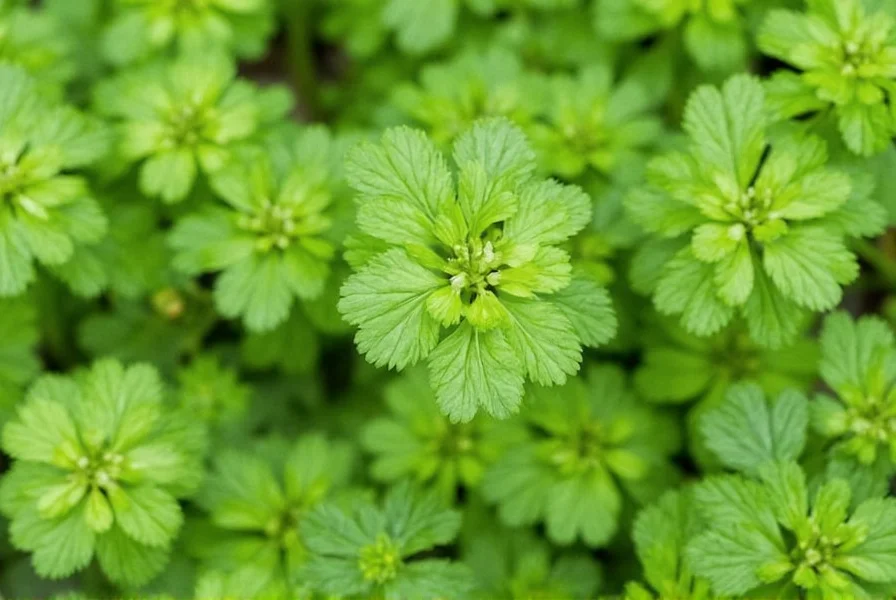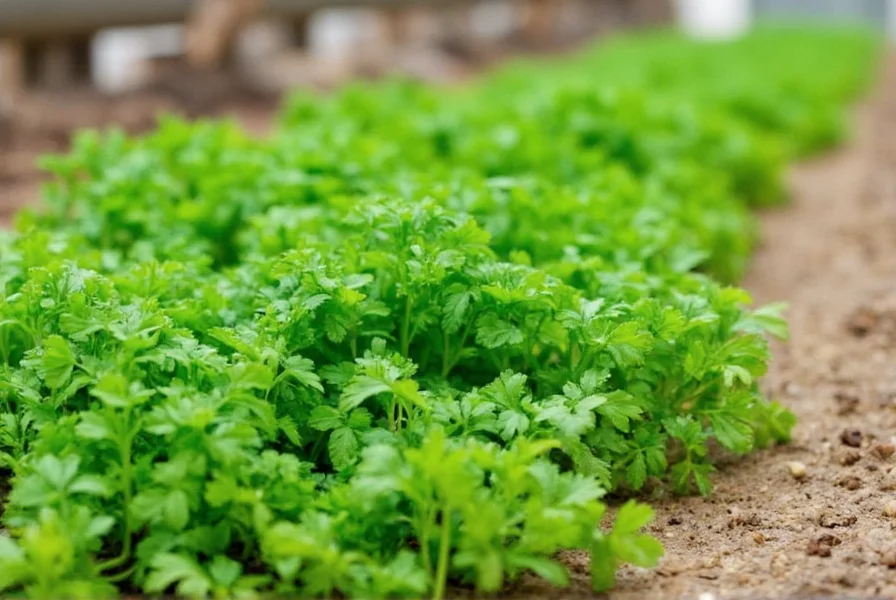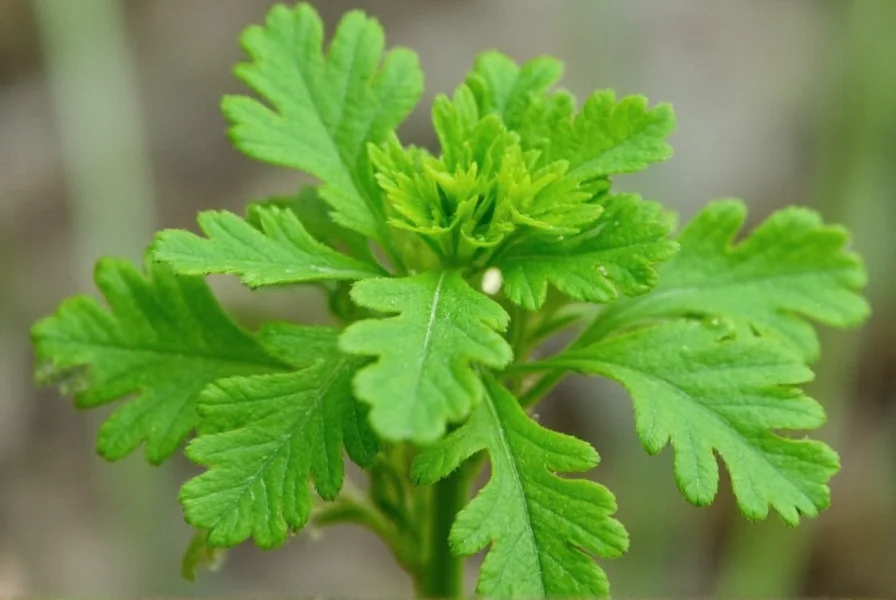Discover the secrets to cultivating vibrant coriander plants that provide fresh, aromatic leaves for your culinary creations. This comprehensive guide reveals proven techniques for growing coriander successfully in gardens or containers, whether you're a beginner gardener or looking to improve your herb-growing skills.
Understanding Coriander Growth Requirements
Coriander (Coriandrum sativum) is an annual herb that thrives in cooler temperatures, making it ideal for spring and fall planting. Unlike many herbs, coriander develops a taproot that doesn't transplant well, so direct sowing is recommended for best results. The plant typically reaches 12-24 inches in height and produces delicate white or pink flowers before setting seed (which becomes the spice known as coriander).
One of the most common challenges when learning how do you grow coriander successfully is preventing premature bolting. When temperatures rise above 75°F (24°C), coriander tends to bolt (send up flower stalks), which causes the leaves to become bitter. Understanding this growth pattern is crucial for planning your planting schedule.
Optimal Planting Time for Coriander
The timing of your planting significantly affects your success with growing coriander from seeds. In most climates, plant coriander:
- 4-6 weeks before your last expected spring frost date
- Again in late summer for a fall harvest
- Every 2-3 weeks during cool seasons for continuous harvest
For gardeners in warmer zones (8+), consider growing coriander as a winter crop. In extremely hot climates, growing coriander indoors with controlled temperatures may be your best option for year-round fresh cilantro.
| Climate Zone | Best Planting Time | Expected Harvest Period |
|---|---|---|
| Zones 3-5 | Early spring & late summer | 8-10 weeks per planting |
| Zones 6-7 | Spring & early fall | 10-12 weeks per planting |
| Zones 8-11 | Fall through early spring | 6-8 weeks per planting |
Soil Preparation for Growing Coriander
Proper soil conditions are essential when you're trying to grow coriander successfully. Follow these soil preparation steps:
- Choose a location with well-draining soil to prevent root rot
- Amend heavy clay soils with 2-3 inches of compost or aged manure
- Test soil pH (coriander prefers slightly acidic to neutral soil between 6.2-6.8)
- Create raised beds if drainage is poor in your garden
- For container growing, use a high-quality potting mix with perlite for drainage
Unlike some herbs that thrive in poor soil, coriander benefits from moderate fertility. Avoid excessive nitrogen which can lead to lush but flavorless leaves. The right soil preparation for how to grow coriander plants makes a significant difference in both yield and flavor quality.

Step-by-Step Planting Guide
Follow this detailed process for how do you grow coriander from seeds:
- Soak seeds overnight to improve germination rates (lightly crush seeds first)
- Sow seeds ¼ inch deep, spacing them 2-3 inches apart in rows 12 inches apart
- Cover lightly with soil and water gently but thoroughly
- Maintain consistent moisture until germination (typically 7-14 days)
- Thin seedlings to 6-8 inches apart once they reach 2 inches tall
- Apply a light mulch to retain moisture and regulate soil temperature
For container growing, choose pots at least 8-10 inches deep to accommodate the taproot. Window boxes work well for growing coriander indoors as long as they receive adequate light. Remember that coriander doesn't transplant well, so avoid moving seedlings once established.
Watering and Sunlight Requirements
Proper watering techniques are critical in how to grow coriander successfully. The plant prefers:
- Consistent moisture (but not soggy soil)
- Approximately 1 inch of water per week
- Morning watering to prevent fungal diseases
- Partial shade in warmer climates (3-4 hours of direct sun)
- Full sun in cooler climates (6+ hours of direct sun)
Check soil moisture by inserting your finger 1 inch into the soil. Water when the top inch feels dry. During hot weather, you may need to water daily. Container-grown coriander typically requires more frequent watering than garden-planted herbs.
Preventing Bolting in Coriander Plants
One of the most frequently asked questions about how do you grow coriander without bolting has several solutions:
- Plant successive crops every 2-3 weeks for continuous harvest
- Choose slow-bolting varieties like 'Santo' or 'Costa Rican'
- Provide afternoon shade in warmer climates
- Mulch heavily to keep roots cool
- Harvest regularly to delay flowering
- Grow in partial shade during summer months
When you notice flower stalks beginning to form, pinch them off immediately to prolong leaf production. If your plants do bolt, you can still harvest the seeds (coriander) once they turn brown.
Harvesting Coriander for Maximum Flavor
Knowing when and how to harvest coriander affects both plant longevity and flavor quality:
- Begin harvesting when plants reach 6 inches tall
- Snip outer leaves first, leaving the center growth intact
- Harvest in the morning when essential oils are most concentrated
- Never remove more than ⅓ of the plant at one time
- For continuous harvest, cut stems just above a leaf node
Fresh coriander leaves lose flavor quickly after picking, so harvest only what you need. The flavor is strongest just before the plant flowers, making timely harvesting essential for the best culinary experience.

Troubleshooting Common Coriander Growing Problems
Even with proper care, you might encounter these issues when growing coriander at home:
| Problem | Causes | Solutions |
|---|---|---|
| Yellowing leaves | Overwatering, nutrient deficiency | Reduce watering, apply balanced liquid fertilizer |
| Thin, spindly growth | Insufficient light, overcrowding | Provide more light, thin plants to proper spacing |
| Premature bolting | High temperatures, water stress | Provide shade, maintain consistent moisture |
| Aphids or spider mites | Dry conditions, poor air circulation | Spray with insecticidal soap, increase humidity |
Prevention is always better than cure when growing coriander successfully. Rotate planting locations annually if growing in the ground, and ensure good air circulation around plants to minimize disease problems.
Extending Your Coriander Harvest Season
To enjoy fresh coriander throughout more of the year, implement these strategies:
- Start new seeds indoors 4-6 weeks before outdoor planting season
- Use shade cloth to protect plants from intense afternoon sun
- Grow in containers that can be moved to optimal light conditions
- Try hydroponic growing for consistent indoor production
- Plant heat-tolerant varieties specifically bred for warm climates
For gardeners in very warm climates, consider growing coriander as a winter crop when temperatures are more favorable. With proper planning, you can enjoy fresh coriander leaves for 6-8 months of the year rather than just the traditional spring and fall seasons.
Frequently Asked Questions About Growing Coriander
How long does it take to grow coriander from seed to harvest?
Coriander typically takes 3-4 weeks to reach harvestable size when grown under optimal conditions. Seeds germinate in 7-14 days, and you can begin harvesting outer leaves when plants reach 6 inches tall. For a continuous harvest, succession planting every 2-3 weeks is recommended as individual plants only provide quality leaves for about 4-6 weeks before bolting.
Can you grow coriander indoors year-round?
Yes, you can successfully grow coriander indoors year-round with proper conditions. Use a container at least 8 inches deep with drainage holes, place in a south-facing window (or use grow lights for 12-14 hours daily), maintain temperatures between 50-85°F (10-29°C), and keep soil consistently moist but not soggy. Indoor-grown coriander may require supplemental lighting during winter months for best results.
Why does my coriander keep dying after a few weeks?
Coriander often dies prematurely due to bolting (flowering) triggered by warm temperatures, inconsistent watering, or insufficient light. As a cool-season annual, it naturally completes its life cycle quickly in warm conditions. To prevent this, plant in cooler seasons, provide afternoon shade in warm climates, maintain consistent moisture, and harvest regularly to delay flowering. Succession planting every 2-3 weeks ensures a continuous supply.
What's the difference between coriander and cilantro?
Coriander and cilantro come from the same plant (Coriandrum sativum). In the United States, "cilantro" refers to the fresh leaves and stems, while "coriander" typically refers to the dried seeds. In many other countries, including the UK, Australia, and India, the term "coriander" refers to both the leaves and seeds. The leaves have a bright, citrusy flavor, while the seeds have a warm, nutty taste used as a spice.
Can you regrow coriander from cuttings?
While coriander is typically grown from seeds due to its taproot system, you can regrow it from cuttings with moderate success. Place fresh coriander stems (2-3 inches long) in water until roots develop (about 1-2 weeks), then transplant to soil. However, plants grown from cuttings may be less vigorous than those grown from seeds and have a shorter productive life. For best results, direct seeding remains the preferred method for growing coriander.











 浙公网安备
33010002000092号
浙公网安备
33010002000092号 浙B2-20120091-4
浙B2-20120091-4